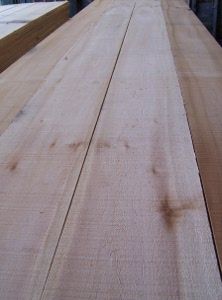
For more than a century, hardwood lumber grading has been an industry standard established by the National Hardwood Lumber Association (NHLA). Thanks to the foresight of the early founders of the NHLA in 1898, some order has been added to the chaos that had become the lumber trade. Finally there was a standardized system of grading to determine quality of lumber. Today we take this lumber grading system for granted and it has become a universal way to quickly convey the quality of a board and how much clear wood is to be had in each board. Keep in mind that NHLA grades apply only to North American Hardwoods. The minute Mahogany, Ipe, or Teak becomes part of the equation, a different set of standards has to be observed that is usually much more specific to the species.
At the turn of the last century when NHLA standards were set up, the furniture industry was still leading the pack in hardwood lumber consumption. So it follows that many of the specifications to meet the grade were based around the needs of the furniture maker. First and Seconds (FAS) and Common grades all specify a minimum amount of clear wood that can be cut from the overall board. All grades have a minimum percentage and up guide so your FAS board may be 100% clear but not required to be considered FAS. Let’s take a quick look at these grades.
FAS
Both faces must meet these guidelines:
| Minimum Board Size | Minimum Cutting Size | Minimum Yield |
| 6″ x 8′ | 4″x5′ or 3″x7′ | 83.33% |
FAS 1 Face and Select
This grade developed later where one face may be of FAS quality but the other of at least a No 1 Common grade. Select requires the same stipulations but now the minimum board size reduces to 4″ x 6.
No. 1 Common
| Minimum Board Size | Minimum Cutting Size | Minimum Yield |
| 3″ x 4′ | 4″ x 2′ or 3″ x 3′ | 66.66% |
No. 2 & 3 Common
| Minimum Board Size | Minimum Cutting Size | Minimum Yield |
| 3″ x 4′ | 3″ x 2′ | 50% |
What is a Lumber Defect?
The important element to consider is what is actually considered a “defect” that will interrupt the clear face. The following is considered unacceptable by NHLA standards:
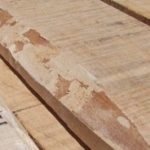
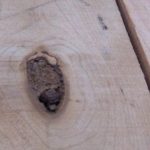
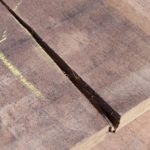
- Knots of any kinds
- Checks, Splits, and Bark Pockets
- Pith and/or Wane
- Worm or Grub Holes
- Bird Pecks
- Rot or Decay
- Sticker Stain from kiln or air drying sticks
If any of these elements are present, they interrupt the face and reduce the size of the cutting that can be obtained.
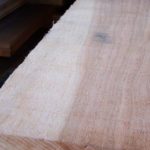
However, the following elements are considered acceptable and will not affect the cutting sizes:
- Sapwood to Heartwood transitions
- Mineral Streaks or Tracks like Glassworm in Ash
- Burl
- Sticker Marks (can be removed with planing)
- Gum Streaks
These elements do not effect the structural integrity of the lumber and in many cases can be seen as appealing character depending on the industry and final use. It is this variance of opinion that NHLA hardwood lumber grades cannot possibly take into account and therefore where the system begins to break down.
The old cliche, “one man’s trash is another man’s treasure” could apply here. For example an 8″ x 9′ board that has several knots, wane, and soft, rotten wood would probably never pass the test to be a No 2 Common board. However many furniture makers would prize that piece for the unique character it contains and even design entire pieces around those “defects”. That same board when viewed by the flooring manufacturer would be immediately rejected for instability and lack of consistent appearance. Likewise an FAS board that meets the grade because the only “defects” present are sapwood and some curly and burl figure would probably meet the same fate. The furniture maker or luthier would love it and the flooring and window manufacturer would reject it. It really comes down to how the lumber is to be used and to what unique stresses it will be subjected.
You can see that simply requesting 1000 board feet of 4/4 FAS Maple may not be descriptive enough and you can still end up with lumber that won’t meet your needs. It also must be said that some species are graded differently from others due to natural factors in how that tree grows. Check out this post on Walnut for more information on that topic.
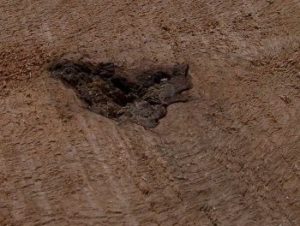
This is not to say that the grading system is broken by any means; but rather, it is just a starting point to get everyone on the same communication plane. NHLA provides these guidelines but encourages communication (and negotiation) between buyer and seller about what is needed and quality required. This is a smart move, otherwise, grading systems become more and more detailed and cumbersome thus increasing lead times and man hours. Eventually this unnecessarily drives up the prices. Use the grade as your guide, but have a clear understanding of what you need to use your lumber for and what “defects” will be accepted. The appropriate grade can then be determined but also what is not covered in the grading structure.
Overall, an educated buyer helps everyone. If you understand how grading works and it’s limitations, then you can help your lumber supplier to provide the best quality product to suit your project. Whatever that project may be.
Learn more about the lumber industry:

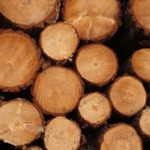
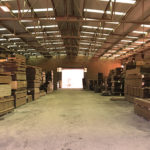
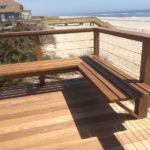

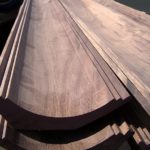
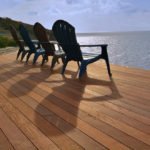


Leave a Reply